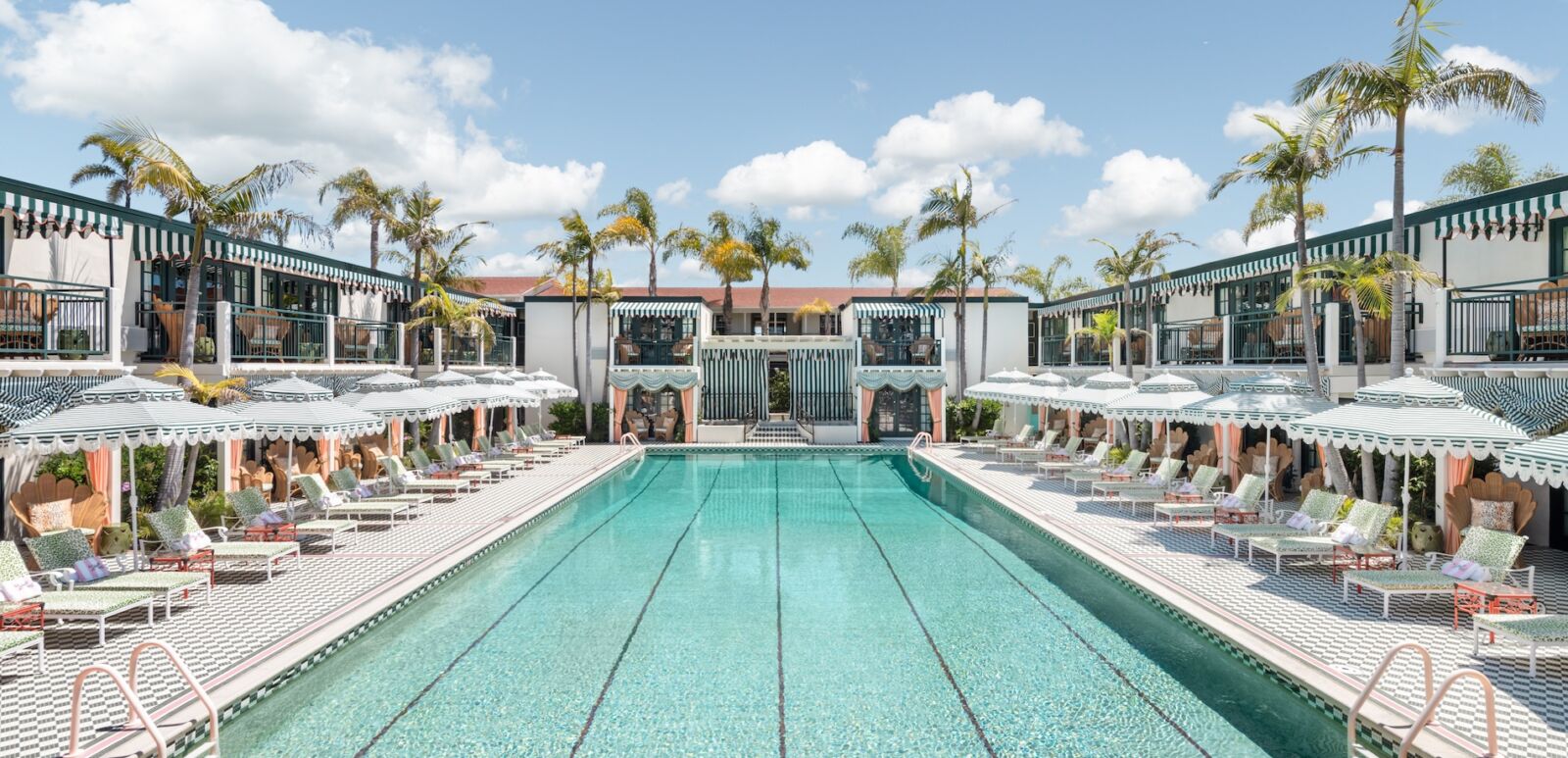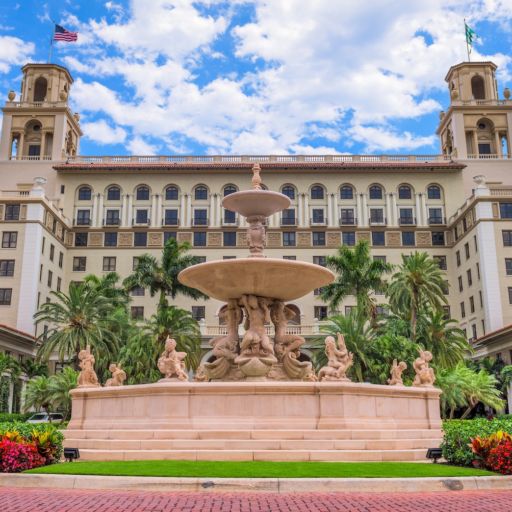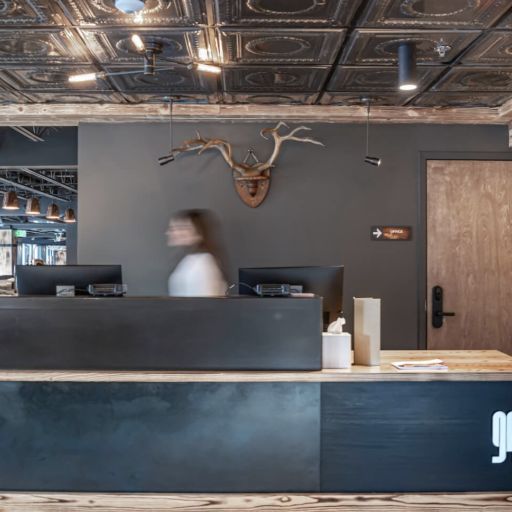Historic hotels can come with a higher price tag. People will shell out to sleep among Art Deco architecture actually built during the Art Deco period or pace the same creaky floors as their favorite writers. If you know where to look, though, you can find rooms in beautiful, old hotels at reasonable prices. From opulent mansions that once housed America’s wealthiest families to charming inns that served as waystations for weary travelers, these are some of the most storied and affordable historic hotels in the United States.
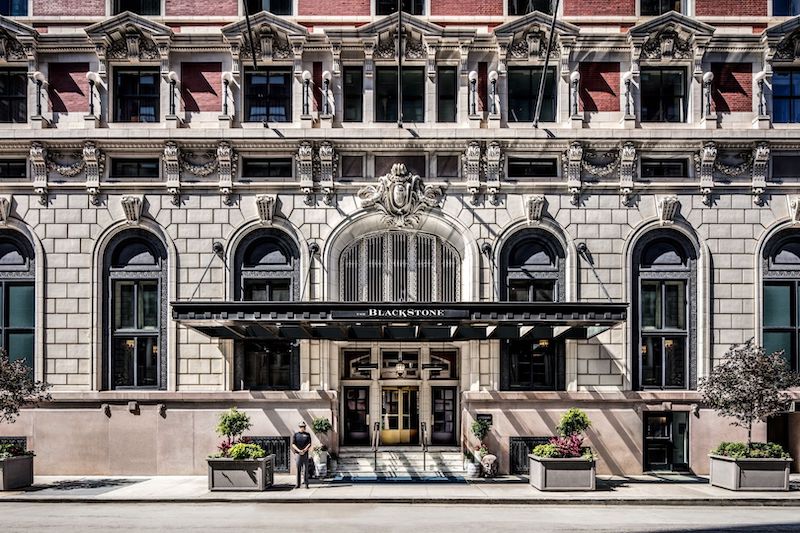
Chicago, Illinois
On the famed Michigan Avenue in Chicago, The Blackstone has been a favorite amongst influential figures since its opening in 1910. That’s in part because its location makes it a prime spot for political events and gatherings, like the infamous “Smoke-Filled Room” meeting during the 1920 Republican National Convention, where Warren G. Harding was selected as the Republican candidate for President. (That three-room suite, room 915, is still available for bookings). All in all, 12 U.S. presidents, including Theodore Roosevelt and Jimmy Carter, have stayed at the hotel so far, earning it the nickname “The Hotel of Presidents.” The Blackstone has also been a favorite haunt of musicians like Nat King Cole and Lena Horne, and mob bosses, including “Lucky” Luciano and Al Capone, the latter of whom was said to hold meetings at The Blackstone’s windowless barbershop. In the early 21st century, a comprehensive restoration project revitalized the hotel and restored many original features, such as the opulent French Beaux-Arts ballroom, intricate plasterwork, and the marble mosaic floors. There are now 335 guest rooms, including four signature suites, and you can expect luxurious touches, like marble baths, Eames lounge chairs and local art.
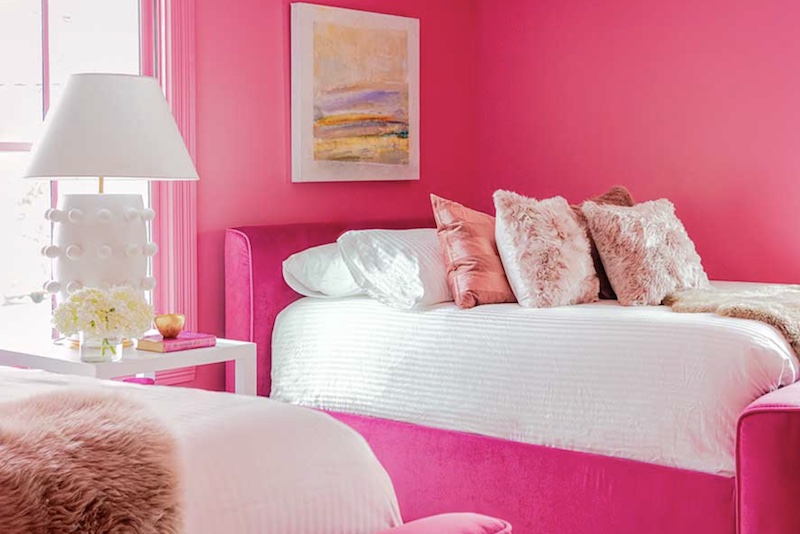
Greensboro, North Carolina
Built in 1889, The Historic Magnolia House gained prominence in the 1950s and 1960s as a safe haven for African American travelers during the era of segregation, when the Jim Crow laws made it difficult for Black travelers to find accommodations. It appeared in The Green Book and was one of just five hotels between Atlanta, Georgia and Richmond, Va, where Black people could stay. Notable figures such as Ray Charles, Ike and Tina Turner, Louis Armstrong, James Brown and Jackie Robinson were known to have spent the night at the Queen Anne style house. It has only four guest rooms, each inspired by the aesthetics of the 1950s and 1960s, and a restaurant that focuses on southern cuisine.
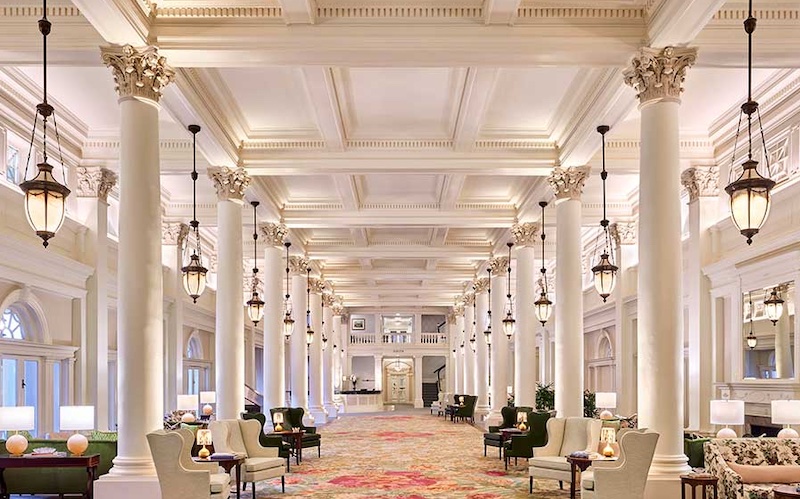
Hot Springs, Virginia
Established in 1766 and set on 2,300 acres within the Allegheny Mountains of southwestern Virginia, The Homestead is one of the oldest accommodations in the United States. In the early years, guests journeyed for days on horseback or in stagecoaches to “take the waters” of the hot springs here to ease their ailments. In fact, Thomas Jefferson spent 22 days at the 18-room wooden hotel onsite to aid his rheumatism (and was one of 24 U.S. presidents who’ve visited). Over the decades, more rooms were added, bringing the total to483, as were additional amenities, including one of the first golf courses in the country in 1892, a 60,000-square-foot spa, and a dozen dining and drinking options.
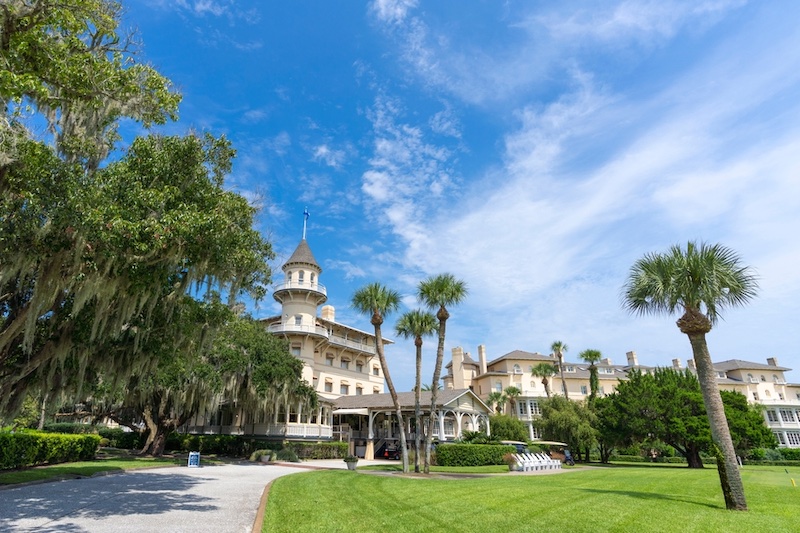
Jekyll Island, Georgia
If you want to feel like Rockefeller, Vanderbilt or Morgan but are on a budget, this historic coastal retreat is the place to go. Built in the late 19th century, it originally served as a private club for some of the nation’s wealthiest families, where they could swim, play croquet, and golf. The resort’s architecture showcases grand Victorian-style structures surrounded by full gardens and moss-draped oak trees. Everything is recently revamped with contemporary comforts, but a stay here will still feel like being on the putting green in “The Legend of Bagger Vance,” which was filmed here.
Kabetogama, Minnesota
A 13-mile boat ride is the only way to reach the Kettle Falls Hotel inside Voyageurs National Park on the border of Minnesota and Canada, one of America’s least visited national parks. Built in 1910 by a lumber baron, the lodging has a storied past, particularly during the Prohibition days when it was frequented by fishermen and loggers—the original on-site saloon retains its uneven wood floors with pockmarks from the latter’s hobnail boots. Today, the Kettle Falls Hotel offers dining and lodging in the main building, as well as a handful of villas, watercraft rentals, and roundtrip lake shuttle service.
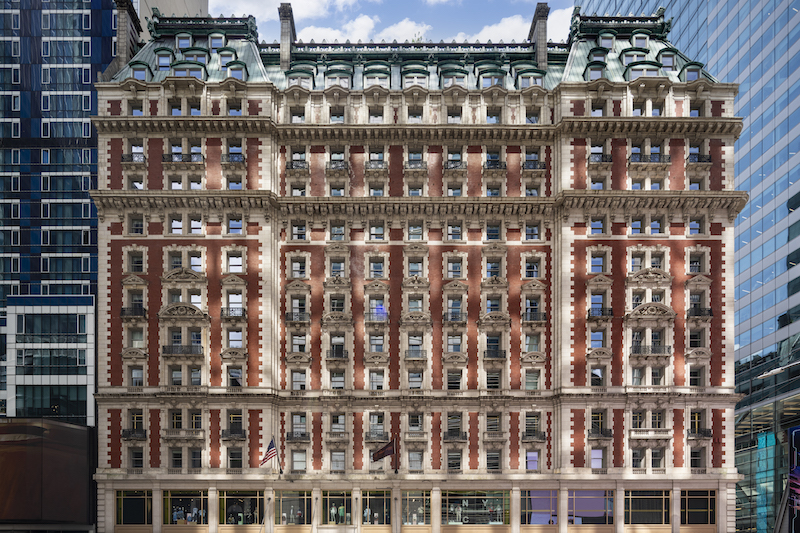
New York, New York
Once frequented by the likes of John D. Rockefeller, F. Scott Fitzgerald and President Theodore Roosevelt, The Knickerbocker is the stuff of legends. Built in 1906 by John Jacob Astor IV, a member of one of America’s wealthiest families, its Beaux-Arts design, Time Square location and glamorous interior made it “the” place to see and be seen. In fact, its barroom became known as “The 42nd Street Country Club.” Historians have credited the hotel with the invention of the Dry Martini (less Vermouth, more Gin); Boston Red Sox Owner Harry Frazee sold Babe Ruth to the Yankees in 1920 and broke the news to the Red Sox manager at The Knickerbocker over drinks; and the hotel’s founder was among the casualties when the Titanic sank — he was on his way back from an expedition to buy wine and art for The Knickerbocker. The original Knick was open for just 15 years, and it reopened under new ownership in 2015. Now, goose-down pillows, plush bathrobes and luxurious linens set the scene in rooms that range from 303 square feet to 1200 square feet. It’s also possible to visit the four dining concepts within the hotel, which include a rooftop bar and a contemporary steakhouse, even if you aren’t a guest.
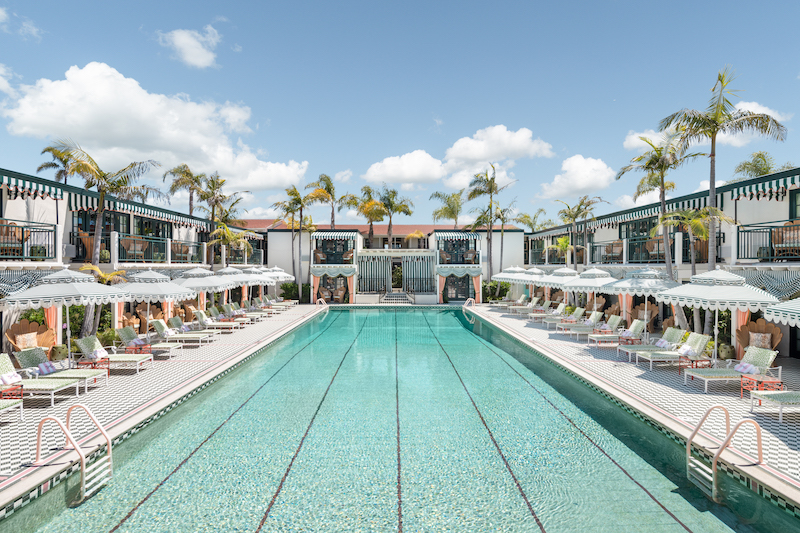
San Diego, California
When Larry Imig, a prominent figure in the San Diego hospitality industry, built what was then called Imig Manor in 1946, he envisioned it as a retreat that would combine Hollywood glamor with the relaxed ambiance of Southern California. Because the Colonial Revival-style hotel is on El Cajon Boulevard, which was the main thoroughfare of the city before Interstate 8 was built, it quickly became a favorite spot of celebrities, ranging from Lucille Ball and Katharine Hepburn to John Wayne and Frank Sinatra. It was so happening that it attracted the interest of Conrad Hilton, who purchased the hotel a few years later and rechristened it The Lafayette. In the 60s, the hotel failed and spent a few decades as an office building before reopening in the 90s as a rather dated accommodation. However, last year, The Lafayette completed a full renovation, transforming the 139-room space into a fever dream of animal print furniture, neon crown molding, hand-painted toilets, and custom wallpapering of bushbabies and snakes. There are also seven food and beverage concepts, as well as the original swimming pool, designed by Olympic gold medalist and “Tarzan” star Johnny Weissmuller.
Colorado Springs, Colorado
The building that is now the Mining Exchange in Colorado Springs was once where miners went to exchange gold and silver and where investors bought and sold stocks. Today, the newly renovated hotel is leaning into that golden history in its design and amenities. The hotel includes 128 guestrooms (with high ceilings, exposed brick, vintage stereographs depicting the area’s Wild West past, and lots of gold decorations), two new food and beverage concepts (Golden Hour and BLK MGK, a reference to the precious metals once traded here), indoor-outdoor event spaces, and a forthcoming spa. You can still peek inside the giant, round vault doors on several floors and meet with the Crystal Concierge to learn about stones mined in Colorado.
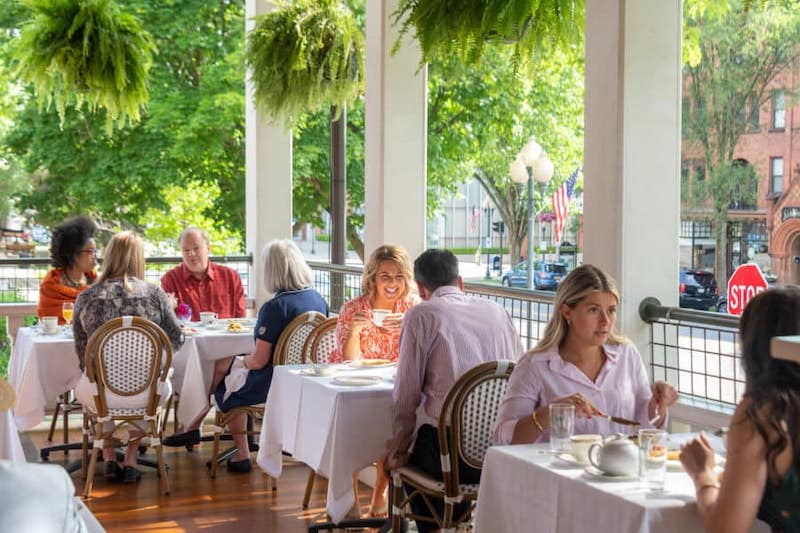
Saratoga Springs, New York
This beautiful Second Empire-style building in downtown Saratoga Springs was built in 1870 by Loren Putnam, a grandson of the city’s founder, as a family home. It wasn’t until the 1950s, when it was inherited by a woman named Alice Bode that it became a lodging house — one she ran until her passing in 1995. The hotel’s current owners bought the building in 1997 and restored it to its original splendor, with tin ceilings, ornate molding and two grand staircases. Each of the 31 rooms is decorated with hand-picked antique furniture and has an ensuite bathroom, some with the original clawfoot tub and others with hand-painted tiles with an interesting Saratoga quote or fact on it. One favorite amenity? There’s a complimentary guest pantry stocked with snacks and soft drinks, which you can enjoy on the wrap-around front porch.
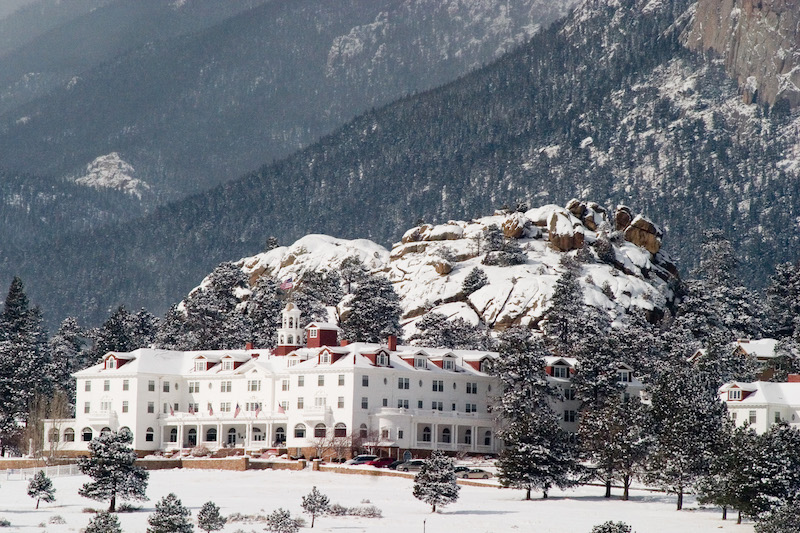
Estes Park, Colorado
Sure, it has fabulous Georgia Colonial Revival architecture, Rocky Mountain views, and one of the nation’s largest private whiskey collections, but The Stanley Hotel is probably best known today for inspiring Stephen King’s novel, “The Shining.” The story goes that King and his wife were guests of the hotel in 1974 — the only guests on the evening before it shuttered for winter—and during the night, the author had a nightmare that involved a fire hose chasing his screaming son down the hallway. When he awoke, he lit a cigarette and had the bones of the thriller laid out in his mind before he’d taken the last drag. Guests and non-guests can learn more about the history of the 115-year-old hotel, including the King connection and the ghosts that allegedly live on the property, on nightly ghost tours. Though if you’re not keen on the supernatural, the historic property also has a pool, various restaurants and beautiful grounds.


